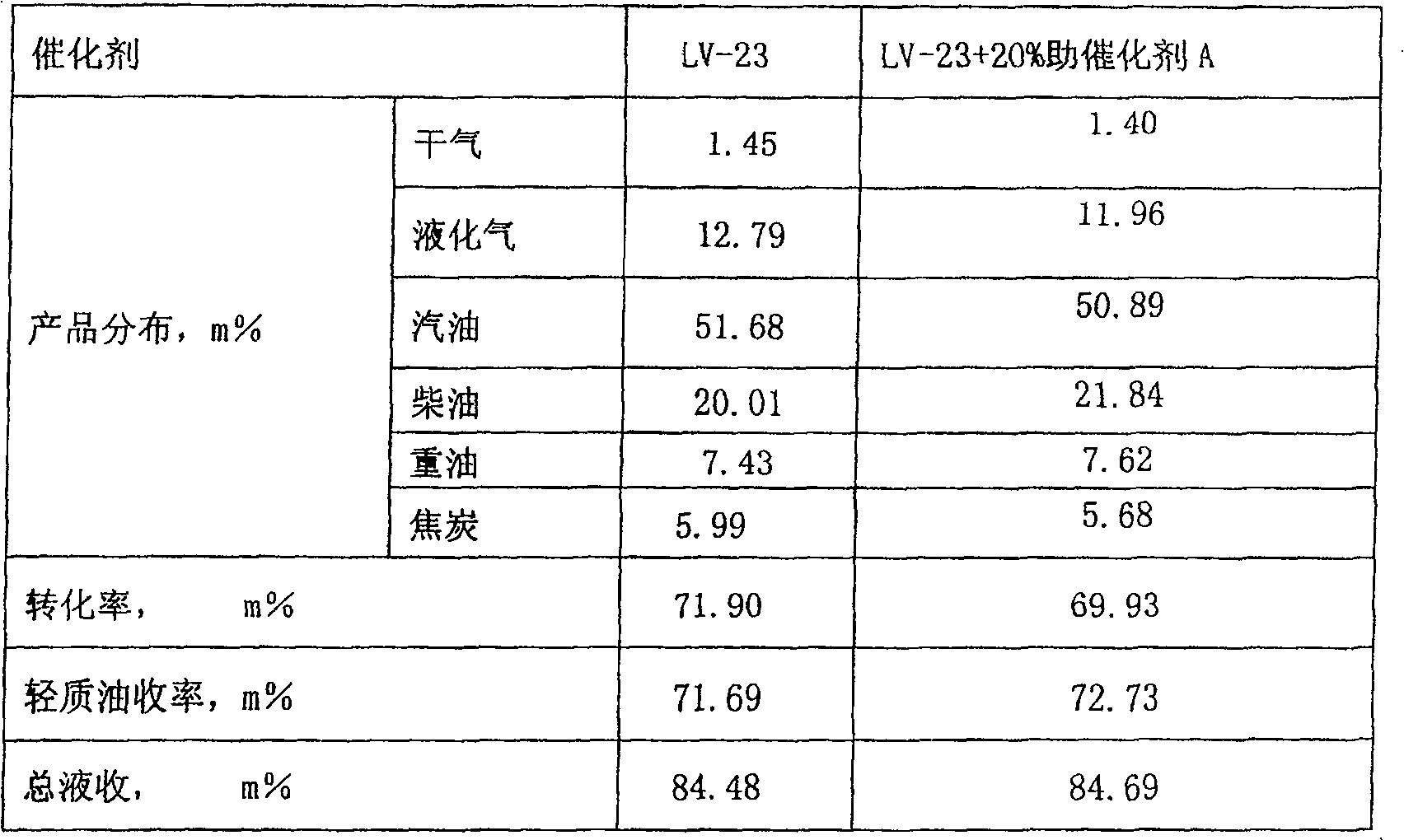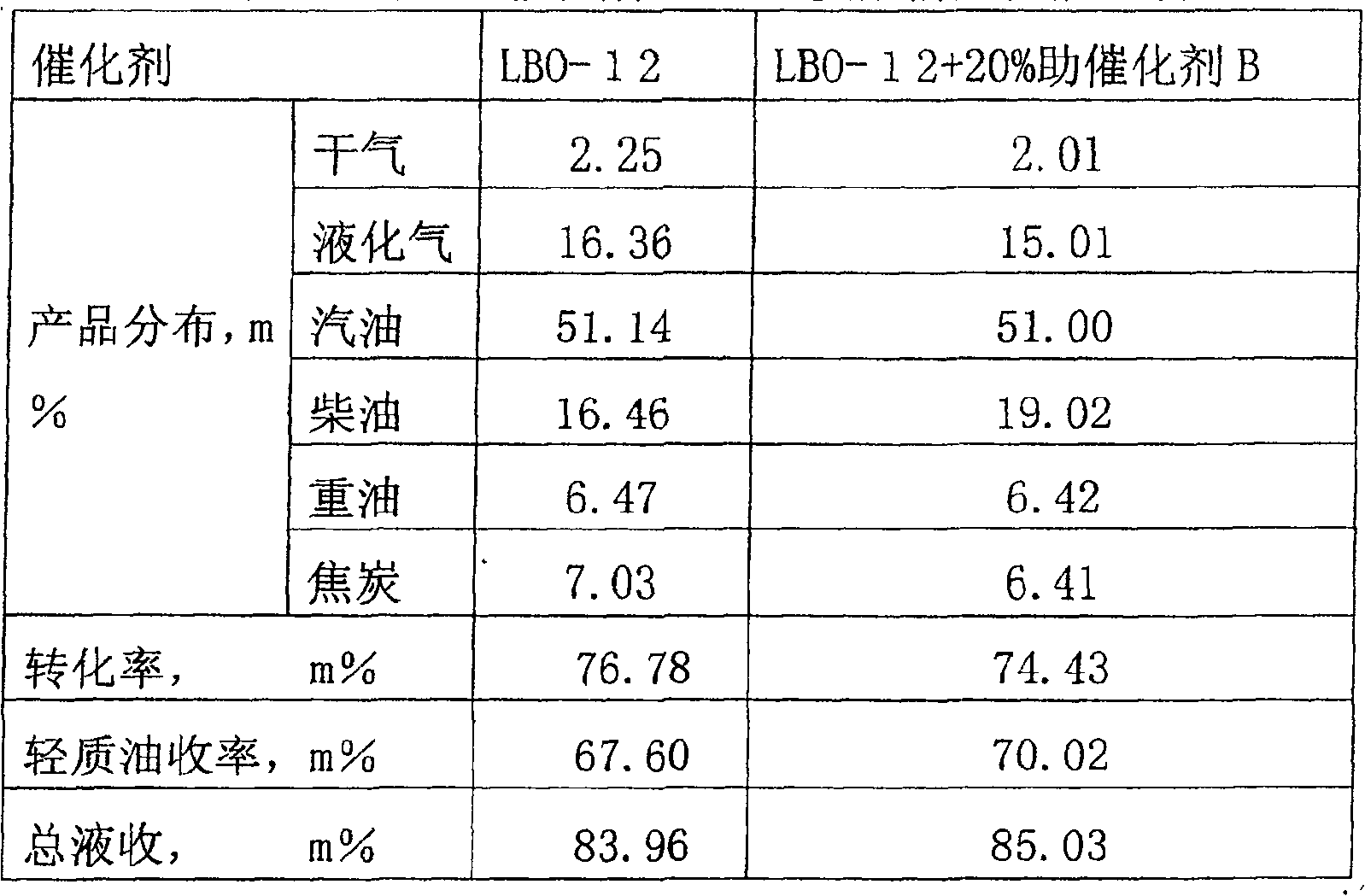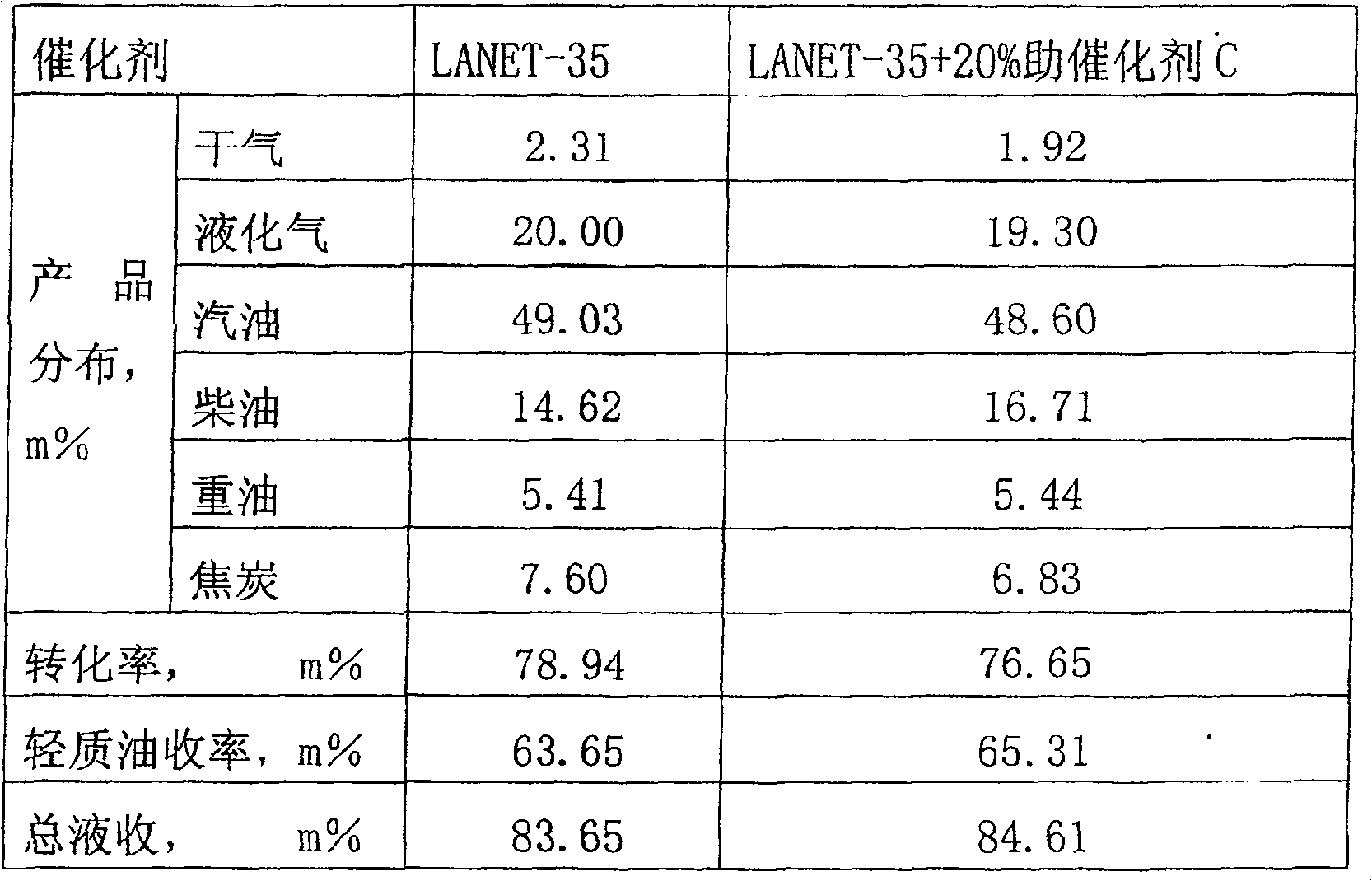Catalytic cracking co-catalyst for high yield diesel oil and its preparing method
A co-catalyst and catalytic cracking technology, which is applied in catalytic cracking, cracking, petroleum industry, etc., to achieve the effects of increasing diesel yield, strong resistance to heavy metals, and good coke selectivity
- Summary
- Abstract
- Description
- Claims
- Application Information
AI Technical Summary
Problems solved by technology
Method used
Image
Examples
Embodiment 1
[0038] (1) Preparation of extraction product microspheres:
[0039] Add water to 1Kg (dry basis) kaolin from Suzhou, 0.1kg pseudoboehmite (calculated as alumina) and 8% water glass (calculated as silicon dioxide) to make a slurry, and spray to obtain 0.9Kg of spray microspheres. The sprayed microspheres were roasted in a muffle furnace at 920° C. for 3 hours to obtain roasted microspheres, which contained about 8% mullite. While stirring, 60 g of sodium hydroxide, 600 mL of deionized water, and 500 g of calcined microspheres were successively put into a stainless steel reactor, and the temperature was raised to 90° C. for 2 hours. After the reaction is completed, the mother liquor is removed by filtration, washed with hot deionized water until pH = 7, filtered and dried to obtain microspheres of the extraction product.
[0040] (2) post-treatment of extraction product to prepare co-catalyst:
[0041] Add 500ml of 1mol / l hydrochloric acid solution in a stainless steel kettle,...
Embodiment 2
[0046] (1) Preparation of extraction product microspheres:
[0047]2Kg (dry basis) kaolin produced in Suzhou, 0.4kg pseudoboehmite (calculated as alumina), 15% water glass and water were made into slurry, and 1.9Kg of spray microspheres were obtained in spray molding. The sprayed microspheres were roasted in a muffle furnace at 900°C for 2 hours to obtain roasted microspheres, which contained about 5% mullite. In a stirring state, 800 g of sodium hydroxide, 5 L of deionized water, and 1 kg of calcined microspheres were sequentially put into a stainless steel reactor, and the temperature was raised to 80° C. for 0.5 hours to react. After the reaction, the mother liquor was removed by filtration, washed with deionized water, and dried by filtration to obtain microspheres of the extraction product.
[0048] (2) post-treatment of extraction product to prepare co-catalyst:
[0049] Add 1l of 0.5mol / l hydrochloric acid solution in a stainless steel kettle, put in 200g of the extra...
Embodiment 3
[0054] (1) Preparation of extraction product microspheres:
[0055] 1.5Kg (dry basis) kaolin produced in Suzhou, 0.075kg pseudo-boehmite (calculated as alumina) and 12% water glass (calculated as silicon dioxide) are added with water to make a slurry, and spray molding obtains 1.2Kg of spray micro ball. The sprayed microspheres were roasted in a muffle furnace at 950° C. for 1 hour to obtain the roasted microspheres, which contained about 10% mullite. In a stirring state, 100 g of sodium hydroxide, 500 mL of deionized water, and 500 g of roasted microspheres were sequentially put into a stainless steel reactor, and the temperature was raised to 80° C. for 3.5 hours. After the reaction is finished, the mother liquor is removed by filtration, washed with hot deionized water until pH=7, filtered and dried to obtain microspheres of the extraction product.
[0056] (2) post-treatment of extraction product to prepare co-catalyst:
[0057] Add 100ml of 3mol / l hydrochloric acid sol...
PUM
 Login to View More
Login to View More Abstract
Description
Claims
Application Information
 Login to View More
Login to View More - R&D
- Intellectual Property
- Life Sciences
- Materials
- Tech Scout
- Unparalleled Data Quality
- Higher Quality Content
- 60% Fewer Hallucinations
Browse by: Latest US Patents, China's latest patents, Technical Efficacy Thesaurus, Application Domain, Technology Topic, Popular Technical Reports.
© 2025 PatSnap. All rights reserved.Legal|Privacy policy|Modern Slavery Act Transparency Statement|Sitemap|About US| Contact US: help@patsnap.com



